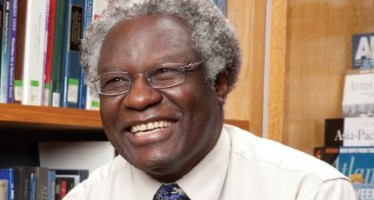Catherine Abel: Stretching the Canvas of Art Deco
 A young lady from the Australian outback, determined to become part of the famed Paris art scene, Catherine Abel has managed to shape her world into a refined cubist and neoclassical image reminiscent of Polish-born painter Tamara de Lempicka (1898-1980) whose immediately recognisable work invokes the daring spirit of the 1920s when flappers and swells scandalised civil society and the established order.
A young lady from the Australian outback, determined to become part of the famed Paris art scene, Catherine Abel has managed to shape her world into a refined cubist and neoclassical image reminiscent of Polish-born painter Tamara de Lempicka (1898-1980) whose immediately recognisable work invokes the daring spirit of the 1920s when flappers and swells scandalised civil society and the established order.
In early 2000, Catherine Abel settled in the French capital and promptly became a regular at The Louvre, absorbing its masterworks by day and retreating – inspired and all – to her apartment to paint the night away. Exceptionally talented and largely self-taught, in Paris Ms Abel retraced the footsteps – and relived the life – of her childhood heroine Tamara de Lempicka who arrived in the French capital a refugee of the Russian Revolution.
Just like Matisse and Picasso before her, Tamara de Lempicka became an assiduous visitor of The Louvre – a fountain of inspiration. She enrolled at the Académie de la Grande Chaumière in Montparnasse and prided herself on being the first woman to produce clear paintings – a technique that sets precisely depicted figures against a likewise sharp background containing cubist traces.
Just as De Lempicka’s work, stripped of banality, is instantly recognisable, so is Catherine Abel’s expanding oeuvre of sensuous art deco portraits and still lifes. Ms Abel has pushed the boundaries of her predecessor’s work. She has not, however, adopted a similarly hedonistic lifestyle. Where Tamara de Lempicka, driven to success and determined to make her own fortune, revelled in upsetting convention and causing scandal, Ms Abel pursued artistic perfection.
The dedication paid off, although not instantly. The owner of a California art gallery convinced her to leave Paris for the West Coast where, it turned out, money was as tight as the living arrangements – a tiny one bedroom condo that barely offered enough room for a bed and an easel. Yet, the trying conditions – and the fainted pastels of the local art deco environment – brought about a burst of creativity. Not able to afford proper canvas and frames, Catherine Abel used wooden boxes, cardboard scraps, and walls instead.
It was thus that she produced one of her now most admired pieces – Cubist Lilies, finished in 2002. Sadly, the black cotton that supports the painting proved an unstable surface, prompting Catherine Abel to redo and recover her signatory work fourteen years after the original came to life. Gilding the Lily has now been completed adding new depth and sensuality with higher definition and warmer tones, thus documenting the evolution of its artist.
Back in Australia, Catherine Abel divested herself from gallery representation after an unfortunate brush with Sydney art dealers who insisted the artist go light on the cubist element, deemed detrimental to sales. Ms Abel opened her own gallery-annex-studio in Trentham, a small village on the edge of the Wombat Forest, 700 metres up in Victoria’s Central Highlands. A hideout for artists, Trentham welcomed its “living cubist” who now lives above her gallery/studio and sells her work worldwide via the internet. Demand is high and a number of art critics concluded that Ms Abel has managed to improve on Tamara de Lempicka, a conclusion she modestly, but resolutely, rejects.
Noting a markedly increased interest in realistic figurative painting, not quite unlike the New Objectivity that blossomed in the Weimar Republic between 1919 and 1933, Ms Abel is at the leading edge of a nascent art movement that aims to rescue – or resuscitate – the core values of art deco / art nouveau and expand the boundaries of realism.
Visiting the Florence Academy of Art for a six week course last year, Ms Abel a hauntingly beautiful series of still lifes working with natural light only and using the techniques of past masters to transpose nature in a way that is artistically pleasing whilst rigorously maintaining anatomical accuracy. The true master captures the essence and beauty of simplicity to produce an image that, in turn, locks in the viewer. Catherine Abel is such a master.
You may have an interest in also reading…
Calestous Juma: A Biotech Revolution for Africa
In western countries, the genetic modification of crops is often seen as a threat to the environment. Professor Calestous Juma
Peter Macnee: IFC Helps Virgin Mobile Find Untapped Demographic
For Mobile Virtual Network Operators (MVNO) Latin America is virgin territory. Barely 0.5% of installed network capacity is currently leased
Samir Barua and 36 Years at IIM-A
Prof. Samir Barua’s tenure as Director of Indian Institute of Management, Ahmedabad will have ended by the time you read


















































































